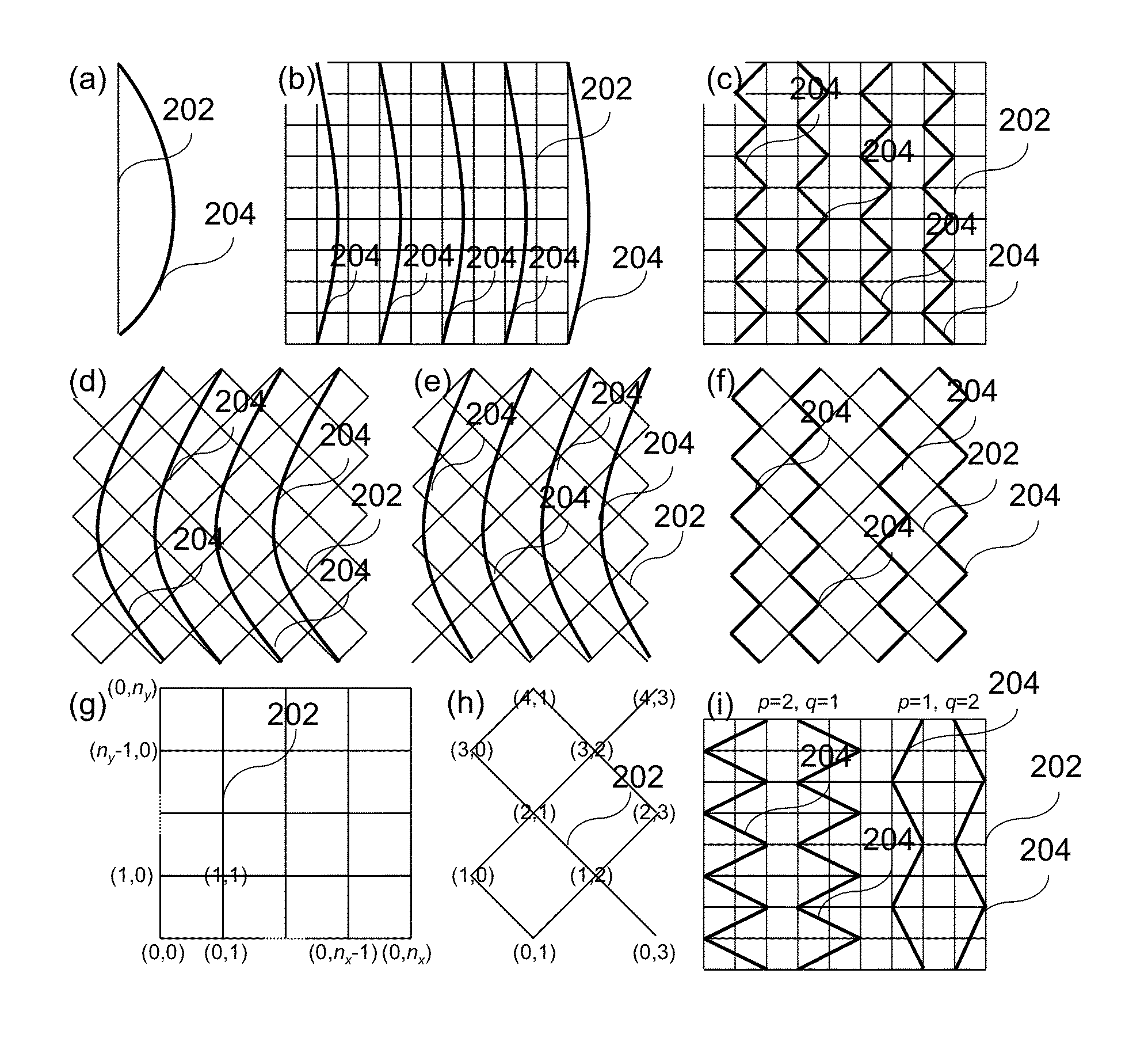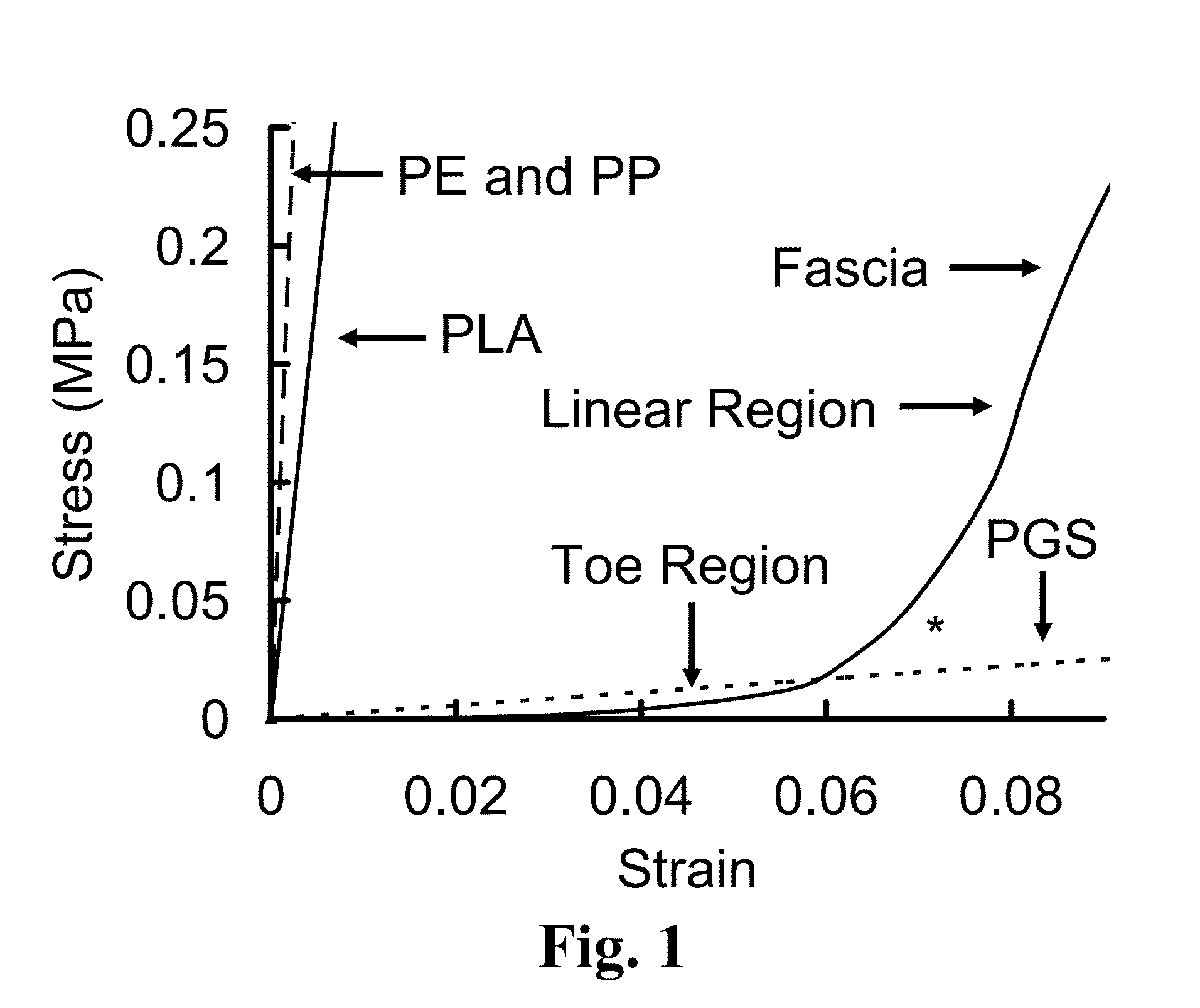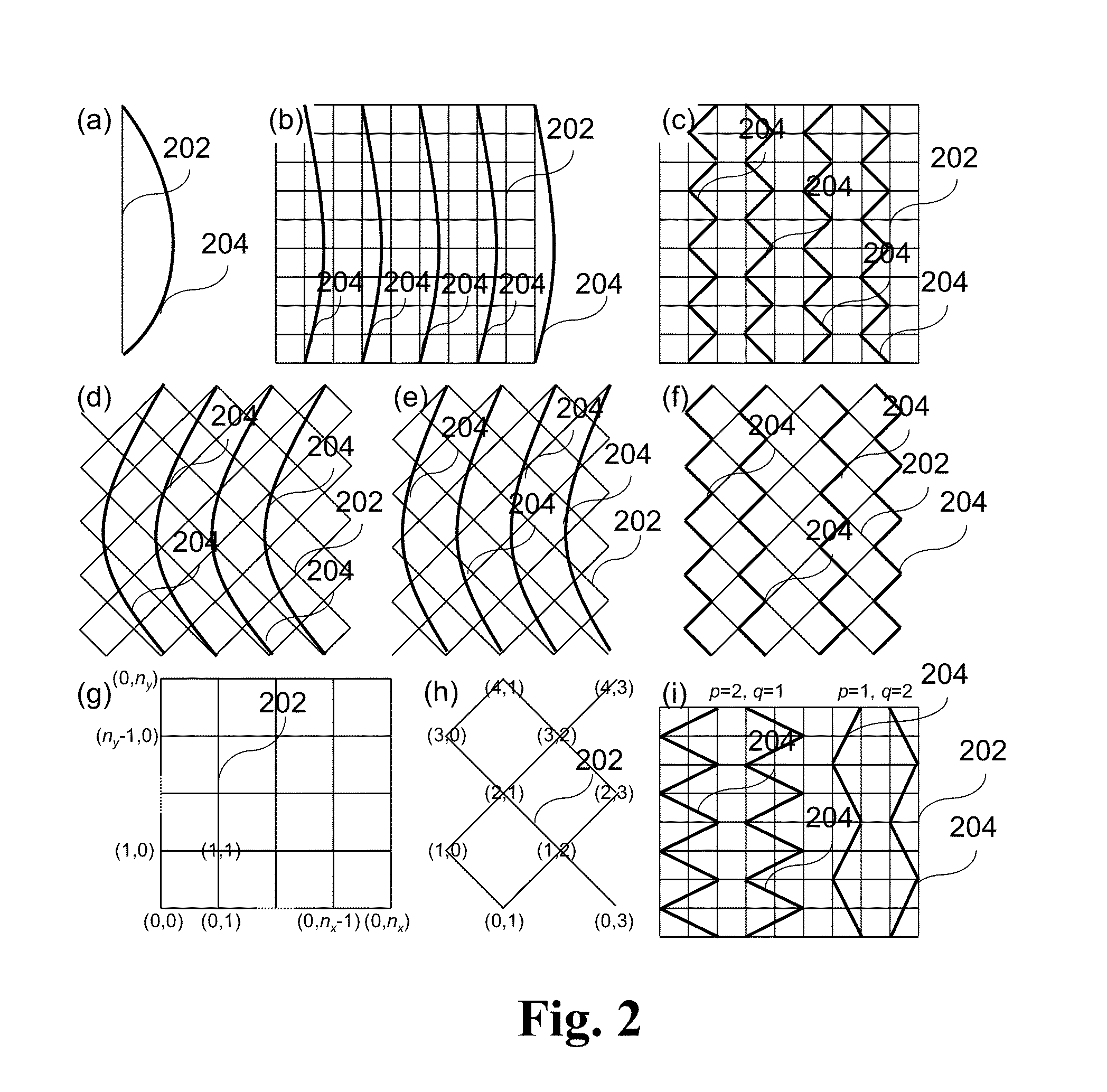Biomimetic multiple strand fiber mesh and sutures
a multi-strand fiber and fiber mesh technology, applied in the field of materials, can solve the problems of inability to disclose pelvic floor disorder inability to carry out surgery, etc., and achieve the effect of reducing the elastic modulus
- Summary
- Abstract
- Description
- Claims
- Application Information
AI Technical Summary
Benefits of technology
Problems solved by technology
Method used
Image
Examples
example 1
[0051]This example considers mesh composed of elastin-like fibers into which collagen-like fibers are woven and anchored at terminal junctions (see FIG. 2). FIG. 2 provides pictorial diagrams illustrating spatial arrangements of elastin 202 (thin) and collagen 204 (thick) fibers in (a) 1D and 2D with (b) elastin 202 in a square lattice and loose collagen 204, (c) elastin 202 in a square lattice and collagen 204 in a zig-zag pattern (p=q=1), (d) elastin 202 in a narrow diamond lattice and loose collagen 204, (e) elastin 202 in a wide diamond lattice and loose collagen 204, and (f) elastin 202 in a narrow diamond lattice and collagen 204 in a zig-zag arrangement (p=q=1). The nodes are numbered as ordered pairs (i, j) denoting row and column position, respectively, for (g) square and (h) diamond lattices. Crimped or zig-zag collagen pathways are shown (i) with p=2 and q=1 (left) and p=1 and q=2 (right).
[0052]In FIG. 2, each intersection of the fibers at which force is transferred is a ...
example 2
[0083]A dual fiber or dual material composite mesh was prepared from polydimethylsiloxane (PDMS) and polylactic acid (PLA), see FIG. 7. The PDMS has elastic properties similar to that of elastin, and PLA has a much higher modulus similar to collagen having a much higher tensile modulus than elastin. The PDMS was prepared by generating a mold in aluminum with groves in specific locations, filling the mold with PDMS to generate a fiber network, allowing the PDMS to cure and then removing the PDMS from the mold. The PLA fibers were secured at one end, woven through the mesh, and securing at the opposite end, all the while allowing PLA fiber to remain loose prior to tensioning the mesh.
PUM
| Property | Measurement | Unit |
|---|---|---|
| elastic modulus | aaaaa | aaaaa |
| elastic modulus | aaaaa | aaaaa |
| thick | aaaaa | aaaaa |
Abstract
Description
Claims
Application Information
 Login to View More
Login to View More - R&D
- Intellectual Property
- Life Sciences
- Materials
- Tech Scout
- Unparalleled Data Quality
- Higher Quality Content
- 60% Fewer Hallucinations
Browse by: Latest US Patents, China's latest patents, Technical Efficacy Thesaurus, Application Domain, Technology Topic, Popular Technical Reports.
© 2025 PatSnap. All rights reserved.Legal|Privacy policy|Modern Slavery Act Transparency Statement|Sitemap|About US| Contact US: help@patsnap.com



